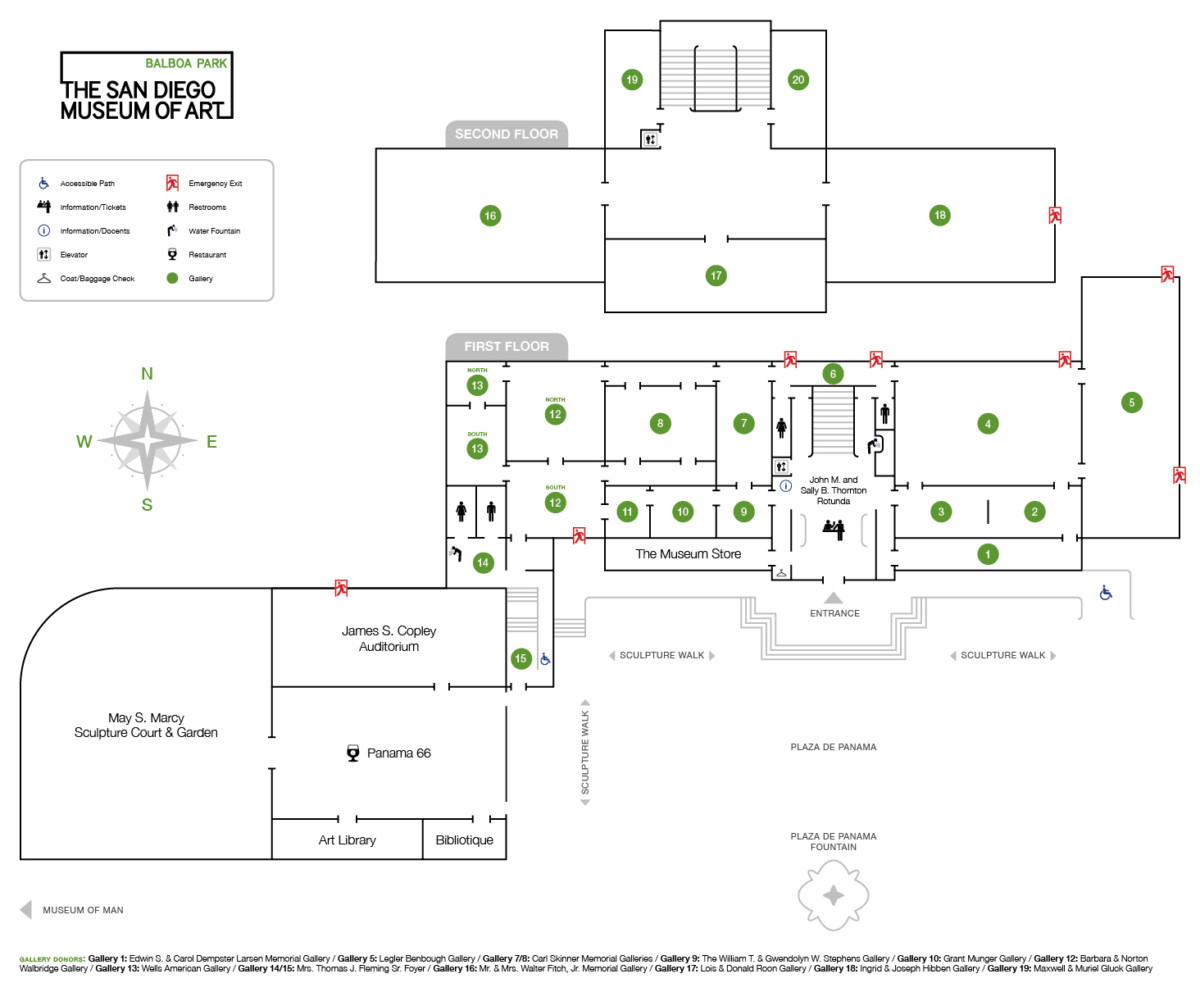This selection of highlights from The San Diego Museum of Art’s Permanent Collection reveals a gradual movement away from European traditions in painting toward the formulation of a uniquely American art, redefining man’s relationship to his surroundings. Beginning with 19th century landscapes depicting the country’s vast untamed wilderness in which nature is all powerful and the vulnerability of the human presence is made apparent, the exhibition closes with Christo’s drawing for his project Running Fence 1976, in which a colossal curtain dissects the California landscape, asserting a new relationship to, and intervention with, our environment.
In contrast to the monumental landscapes are introspective portraits, such as Thomas Eakins’ Elizabeth Crowell with a Dog c.1871, and Winslow Homer’s intimate watercolor Woman with a Rose 1879. Humanistic works during the turn of the century expose the challenges of urban life as well as raise the level of social consciousness in George Bellow’s Electrocution 1917; the hardships and sacrifices of the Great Depression follow in the work of Thomas Hart Benton set against swirling mid-western plains. With the rise of the Abstract Expressionists, subject matter gives way to the power of gesture and individual freedom, paralleling a new post-war confidence and exuberance. Arnold Newman’s photographs of American artists in the 1960s and 70s capture them in the diverse styles of their own art. Ultimately banal objects from daily life are elevated to the status of high art in Pop works such as Jim Dine’s Atheism, in which his bathrobe becomes an assertive and colorful self-portrait.
The biographies of the artists represented in this exhibition express in many ways the history of art in America. Many artists came from the old colonial cities of the East–Boston, Philadelphia, and New York–which had the longest tradition of art education, but later the Midwest provided a growing number of artists from places like Chicago, Cleveland, and Cincinnati. Some immigrated from France, Germany, England, and other places, while others went to Europe, especially Paris, to observe firsthand the developments in Impressionism, Cubism and Surrealism. After World War II, the artistic center of gravity shifted and it was America’s turn to become an internationally recognized center for artistic innovation.
Many thanks are due to Matthew and Iris Strauss and to Bram and Sandy Dijkstra for their generous loans to this exhibition.


